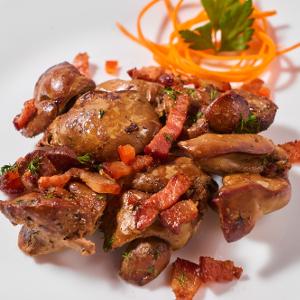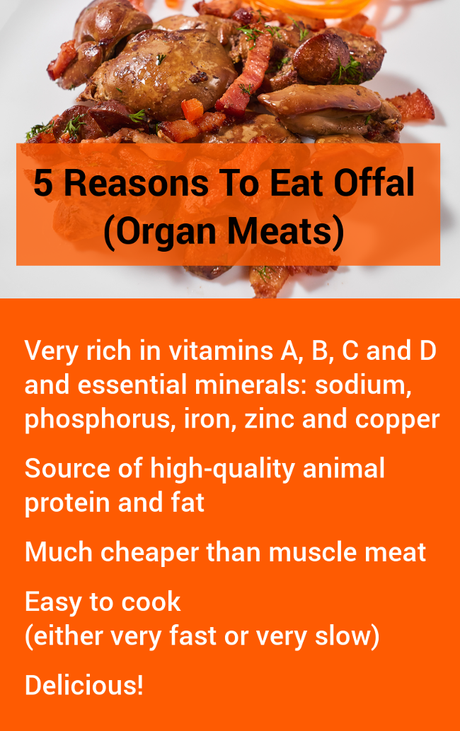 Do you feel squeamish at the thought of eating offal? You are not alone.
Do you feel squeamish at the thought of eating offal? You are not alone.
Most people in the West shun organ meat and think of it as "subprime". It is used in pâté and processed meats, but rarely cooked on its own.
This is really such a shame. Offal (also called variety meats or organ meats) is in many ways better than standard muscle meat.
Everyone used to eat it before the Industrial Revolution. Many traditional cultures around the world still do.
Get rid of this mental barrier, and there are many benefits to be had. Here are a few reasons why offal is good for you, especially if you are on a low-carb diet.
Trigger warning - if your diet's name starts with letters V, E and G, stop reading now. This article is written strictly for committed carnivores.Offal is highly nutritious
Offal is incredibly rich in nutrients - much more so than standard muscle meat. It's a great source of vitamins A, B, C and D. It is also full of essential minerals like sodium, phosphorus, iron, zinc and copper.
On a low-carb diet, offal meat delivers the nutrients you might be missing from fruit and grains.
Offal is very cheap
Many people feel squeamish about offal. So the demand is quite low - which is good for us! As a result, offal is much cheaper than standard red meat.
As a source of high-quality animal protein, it is cheaper than chicken breasts or tinned tuna.
Offal is easy to cook
Most offal is quite easy to cook. Generally, you can cook most organ meats very quickly - or really slowly. Smaller bits like chicken hearts or slices liver can be fried in butter and ready in 5-10 minutes tops. Bigger chunks like ox heart are better off braised or slow-cooked.
Slow-cooking works great for many other types of meat and actually saves a lot of prep time. If you haven't already got one, consider getting a slow-cooker.
Offal is a source of high-quality protein and fat
Offal contains the full spectrum of amino acids, including some that are less abundant in muscle meat. It is also high in healthy fat, especially omega-3 oils.
Some types of offal contain a very small amount of carbs (1-2g per 100g) - especially liver, since glycogen storage is one of its functions.
Offal is actually delicious
The taste is slightly different to red meat. But offal is definitely delicious to eat. It doesn't need much dressing up - just seasoning with salt and pepper is enough.
My favourite offal meals are chicken livers or hearts fried in butter, slow-cooked lamb hearts and roasted marrow bones. If you feel adventurous, there are many amazing offal recipes in Asian and Oriental cuisines.
Where to buy offal
Liver is the most commonly accepted organ meat. You can find chicken or lamb liver in most supermarkets. In the UK, you might come across kidneys as well (essential ingredient in steak & kidney pie - one of our nation's favourites).
Other types of offal are harder to find. Your best bet is a butcher shop - either locally, or online. Online shopping means you can check out the farm's practices and make sure your meat is free-range and grass-fed. When shopping locally, check out Halal and Asian grocers - they often stock offal.
If you are in the UK, I can recommend Green Pasture Farms - I get all my offal meats from them.
Which organ meats can you eat
Here's a list of offal meats and odd cuts you can try out:
- Liver - lamb, beef, pork, chicken or duck
- Kidneys - usually lamb or pork
- Hearts - lamb, beef, pork or chicken
- Gizzards - chicken, duck or goose
- Tripe - lamb or beef
- Brains - usually beef or lamb
- Bone marrow - usually beef
- Tongue - beef or lamb
- Cheeks - beef or pork
- Sweetbreads -usually lamb
- Oxtail - beef
Want to know more about cooking offal?
Check out this special cookbook with recipes and techniques for cooking delicious organ meats:
Odd Bits: How to Cook the Rest of the Animal

Author:
Updated:

